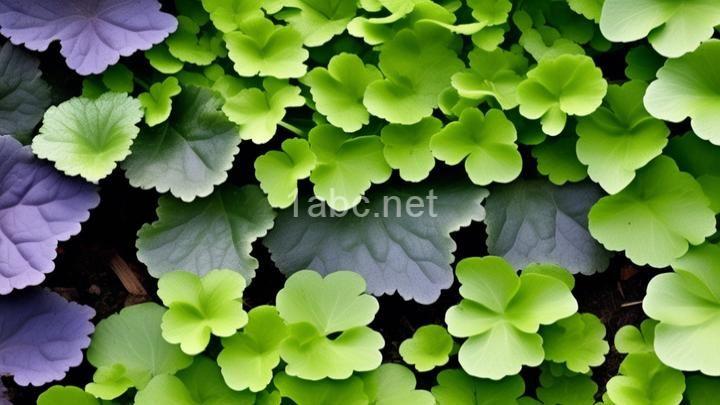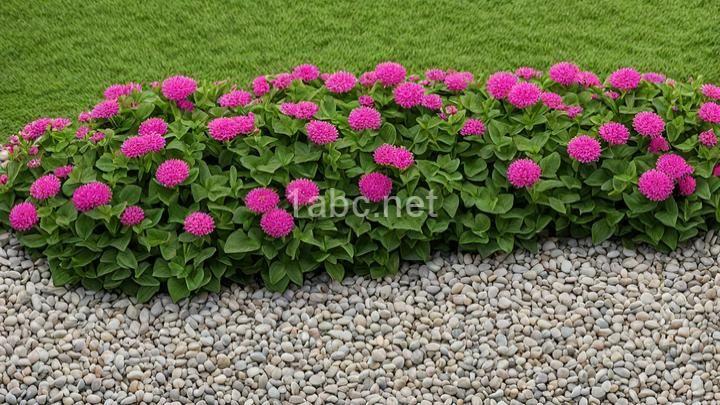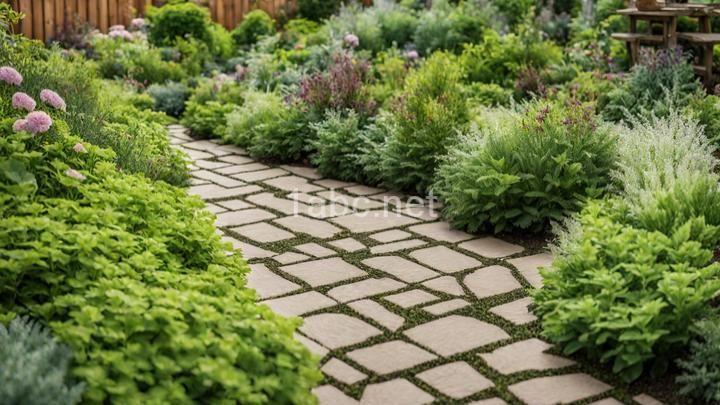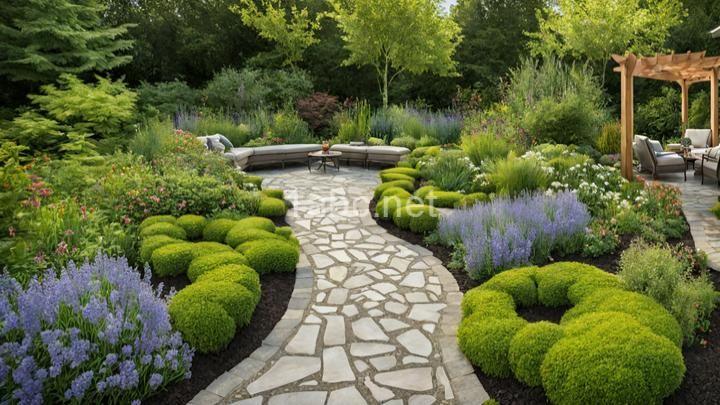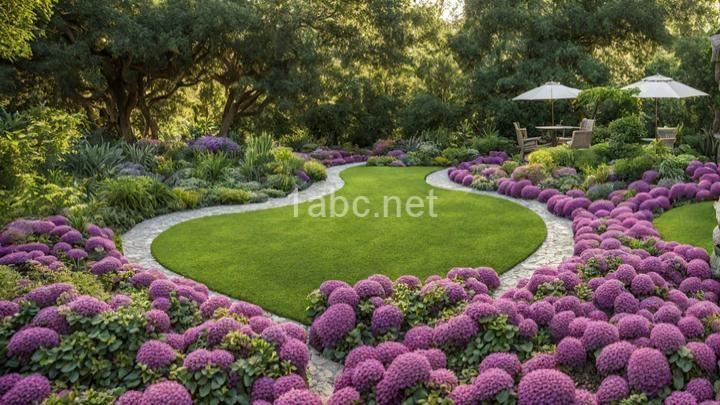Ground Covers for Shade: Transforming Shady Areas in Your Garden
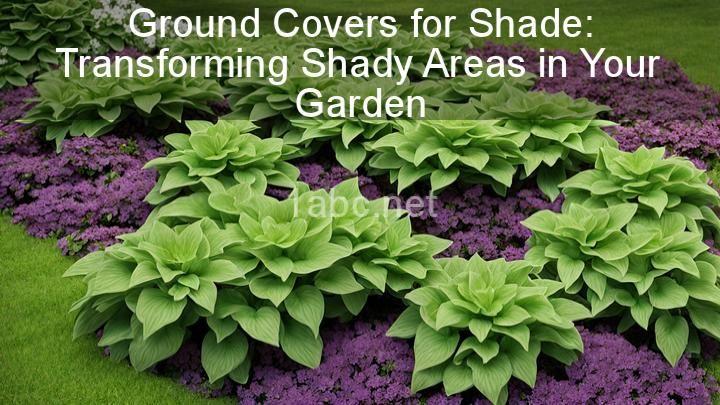
Introduction:
Welcome readers to this blog post, where we will explore the wonderful world of ground covers for shade. If you have a shady area in your garden that you would like to transform into a beautiful and low-maintenance space, you're in the right place! Ground covers not only add beauty to your garden but also help prevent soil erosion and reduce maintenance. Get ready to discover a variety of ground cover options that will thrive in shady conditions and bring new life to your garden.
I. Understanding Shade in Your Garden
When it comes to shade, it's important to understand the different types and how they can vary throughout the day. Full shade refers to areas that receive little to no direct sunlight, while partial shade refers to areas that receive a few hours of direct sunlight each day. Keep in mind that the intensity of shade can change depending on factors such as the time of day and the surrounding structures. To identify shady areas in your garden, pay attention to where the sun casts shadows throughout the day. These areas are perfect for ground covers that thrive in shade.
II. Choosing the Right Ground Covers for Shade
Now that you have identified shady areas in your garden, it's time to choose the right ground covers. There are several options that not only tolerate shade but actually thrive in it. Let's explore some of these amazing plants:
- Hostas: Hostas are known for their stunning foliage and come in a wide range of colors, sizes, and textures. They are ideal for filling in large shady areas and creating a lush and vibrant look in your garden.
- Ferns: Ferns are graceful and elegant plants that thrive in shaded and moist environments. Their delicate fronds add a touch of beauty and add a sense of tranquility to any garden.
- Lamium: Lamium, also known as dead nettle, is a low-growing ground cover that spreads quickly and thrives in shady areas. It features lovely variegated leaves and produces delicate flowers in spring.
These are just a few examples of ground covers that thrive in shade. When selecting ground covers, consider factors such as soil type, moisture requirements, and growth habits. Some plants prefer well-drained soil, while others thrive in moist or even boggy conditions. Choose plants that are suitable for your specific garden conditions to ensure success.
III. Planting and Care Tips
A. Preparation:
Before planting your ground covers, it's important to prepare the soil properly. Start by loosening compacted soil, which will promote healthy root growth and allow water to penetrate effectively. Adding organic matter, such as compost or well-rotted manure, will improve the soil structure and provide essential nutrients for your plants. Additionally, remove any existing weeds or unwanted plants to create a clean and healthy planting space.
B. Planting:
When it comes to planting ground covers, it's crucial to follow the proper techniques to ensure their success. Here is a step-by-step guide:
- Dig a hole that is slightly wider and deeper than the root ball of your plant.
- Gently loosen the roots of the plant before placing it in the hole.
- Backfill the hole with soil, ensuring that the top of the root ball is level with or slightly above the surrounding soil.
- Firmly press the soil around the plant to eliminate air pockets.
- Water the plant thoroughly to settle the soil and provide initial hydration.
Remember to give each plant enough space to grow and spread. Overcrowding can lead to poor airflow, increased risk of disease, and competition for resources.
C. Maintenance:
Proper maintenance is essential for the health and beauty of your ground covers. Here are some care tips to keep in mind:
- Watering: Different ground covers have varying moisture requirements. Some prefer consistently moist soil, while others tolerate dry spells. Be sure to water your plants accordingly, taking into account their specific needs. Avoid overwatering, as it can lead to root rot and other issues.
- Mulching: Mulching around your ground covers helps conserve moisture, suppress weed growth, and regulate soil temperature. Apply a layer of organic mulch, such as shredded bark or compost, around the plants, being careful not to cover the stems or crowns.
- Regular Maintenance: Pruning and cleaning up debris are important tasks to keep your ground covers looking their best. Remove any dead or damaged foliage to improve the overall appearance of your plants. Fertilizing may be necessary for some ground covers, but be sure to follow the specific recommendations for each plant.
IV. Troubleshooting Common Issues
While ground covers for shade are generally low-maintenance, there are some common challenges that gardeners may encounter. Here are a few issues you may face and practical solutions to overcome them:
- Pests: Some ground covers are susceptible to pests such as slugs, snails, and aphids. To deter these pests, consider using organic pest control methods such as handpicking, introducing beneficial insects, or applying natural repellents.
- Diseases: Fungal diseases, such as powdery mildew, can affect certain ground covers. To prevent and control diseases, ensure proper air circulation by spacing plants appropriately and avoiding excessive watering.
- Poor Growth: If your ground covers are not thriving, it could be due to inadequate light, poor soil conditions, or improper watering. Assess these factors and make any necessary adjustments to promote healthy growth.
V. Design Tips for Creating Beautiful Shady Spaces
Designing a shade garden can be a delightful and rewarding experience. Here are some design tips to inspire you:
- Color Combinations: Choose a color scheme that complements your ground covers. Cool shades of green, blue, and silver create a serene and calming atmosphere, while splashes of vibrant colors can add excitement and visual interest.
- Texture Variations: Mix different textures to create depth and contrast in your shady garden. Pair fine-textured plants, such as ferns, with bold-textured plants like hostas to create visual intrigue.
- Companion Plants: Consider planting companion plants that enhance the beauty of your ground covers. For example, astilbes, with their feathery plumes, can provide a stunning backdrop to lamium's delicate flowers.
Conclusion:
Congratulations! You have now learned about the wonderful world of ground covers for shade and how they can transform your garden's shady areas into beautiful and low-maintenance spaces. Remember to choose the right ground cover plants that thrive in shade, prepare the soil properly, and provide the necessary care and maintenance. Troubleshoot any issues that may arise and get creative with your shade garden design. Now it's time to take action and start your own shade garden. We wish you success in your gardening endeavors and hope you enjoy the beauty and tranquility that ground covers for shade can bring to your garden. Happy gardening!
FREQUENTLY ASKED QUESTIONS
What are ground covers?
Ground covers are low-growing plants that are used to cover large areas of the ground. They are often used as alternatives to grass lawns in areas where grass is difficult to grow or maintain. Ground covers serve several purposes, including preventing soil erosion, suppressing weeds, and adding aesthetic value to an outdoor space. They can be used in a variety of settings, such as gardens, landscapes, and even on slopes or banks. There are many different types of ground covers to choose from, including flowering plants, ornamental grasses, mosses, and creeping vines.
Why should I consider using ground covers in shady areas of my garden?
Using ground covers in shady areas of your garden offers several benefits:
- Weed suppression: Ground covers form a dense carpet of foliage that helps prevent weeds from sprouting and taking over your garden beds. This reduces the amount of time and effort you'll need to spend on weeding.
- Soil erosion prevention: Shady areas are often prone to soil erosion due to limited sunlight and less extensive root systems. Ground covers help anchor the soil in place, preventing erosion and protecting the underlying soil structure.
- Moisture retention: Many ground covers have shallow root systems that can absorb and retain moisture in the soil. This can be particularly beneficial in shady areas where water may not easily reach the ground.
- Aesthetics: Ground covers can add visual interest to your garden by providing a diverse range of colors, textures, and patterns. They can help soften the appearance of hard surfaces and create a more cohesive and polished look.
- Habitat creation: Ground covers can serve as habitat for small animals, insects, and beneficial organisms. They provide food, shelter, and nesting sites, contributing to a healthier and more balanced ecosystem in your garden.
- Reduced maintenance: Once established, ground covers generally require less maintenance compared to turf or bare soil. They require less mowing, watering, and fertilizing, which can save you time, money, and effort in the long run.
Overall, using ground covers in shady areas of your garden can enhance the overall health and beauty of your landscape while minimizing maintenance requirements.
What are the benefits of using ground covers for shade?
Using ground covers for shade can offer several benefits:
- Temperature Regulation: Shade-providing ground covers can help reduce the temperature of an area by blocking direct sunlight. This can create a cooler and more comfortable environment, especially in hot climates.
- Weed Control: Ground covers act as a natural barrier, preventing weed growth by blocking sunlight and shading the soil. This helps to minimize the amount of time and effort required for weeding.
- Moisture Conservation: Shade-loving ground covers can help retain moisture in the soil by covering it, reducing evaporation and providing a shield against extreme weather conditions. This can be particularly beneficial in preventing soil erosion and drought stress.
- Soil Protection: Ground covers protect the soil from erosion caused by wind and heavy rainfall. They help to anchor the soil in place, preventing it from being washed away.
- Aesthetic Appeal: Ground covers for shade can add beauty and enhance the overall appearance of a landscape. They come in a variety of colors and textures, allowing you to create a visually appealing garden or outdoor space.
- Biodiversity Support: Shade-providing ground covers can create a diverse habitat, attracting beneficial insects and wildlife. This can contribute to a healthier ecosystem and support the balance of biodiversity in your garden.
- Reduce Maintenance: Once established, ground covers generally require less maintenance compared to other types of plants. They typically have slower growth rates and may only require occasional trimming or pruning to keep them in shape.
Remember to choose ground covers that are suited for the specific conditions of your shaded area, such as soil type, moisture levels, and light availability.
What are some popular ground covers for shady areas?
Some popular ground covers for shady areas include:
- Hostas: These leafy plants come in various sizes and shades of green, adding texture and color to shadier spots.
- Ajuga: Also known as bugleweed, this low-growing plant has attractive foliage and produces small flowers in shades of blue or purple.
- Pachysandra: Commonly used as a ground cover due to its ability to spread quickly, Pachysandra thrives in shady areas and has glossy green leaves.
- Vinca minor: Also called periwinkle, this evergreen ground cover features trailing vines and produces lovely blue or purple flowers.
- Lamium: With its silver or variegated foliage and delicate flowers, Lamium is an excellent choice for adding interest to shaded areas.
- Ferns: Various types of ferns, such as Christmas Fern or Lady Fern, thrive in shady conditions and create a lush and vibrant ground cover.
- Creeping Jenny: This ground cover has bright green foliage that spreads quickly and creates a soft carpet-like effect.
These are just a few popular choices, and there are many more options available depending on your specific preferences and growing conditions.
